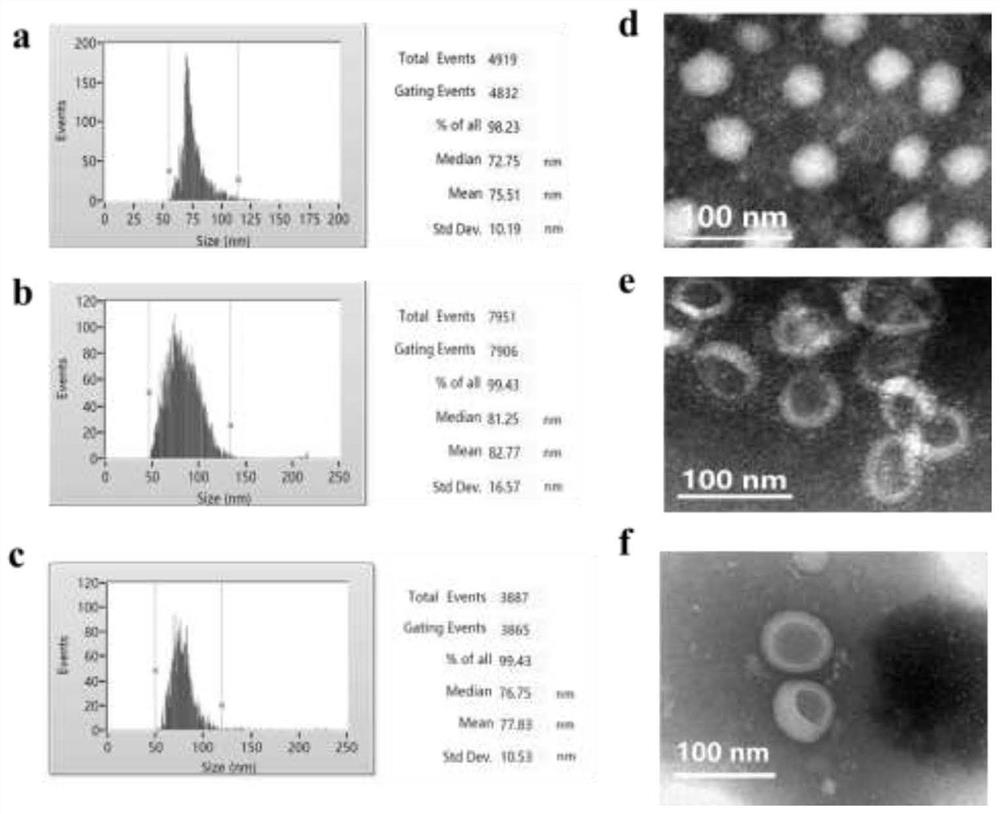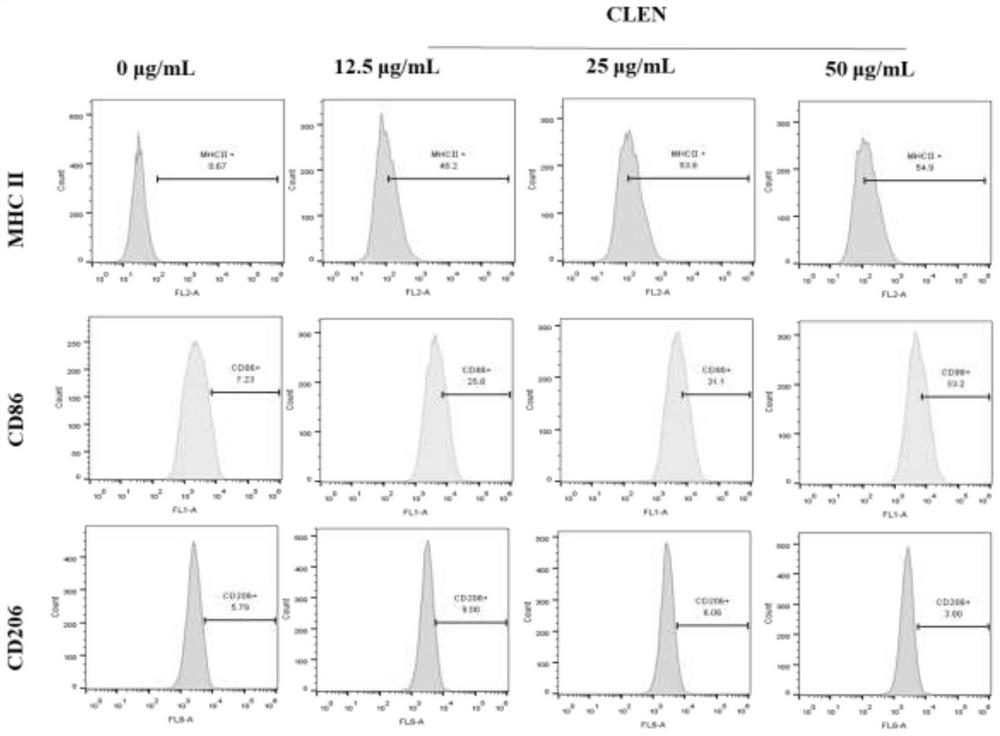Catharanthus roseus-sourced exosome nano-vesicle and application thereof in immunoregulation
A technology of nanovesicles and periwinkle, which is applied in the field of medicine to achieve the effect of strong antimicrobial and antitumor activity and strong clinical application value
- Summary
- Abstract
- Description
- Claims
- Application Information
AI Technical Summary
Problems solved by technology
Method used
Image
Examples
Embodiment 1
[0054] Example 1 Extraction and isolation of exosome-like nanovesicles derived from periwinkle leaves
[0055] Enzymatic hydrolysis of periwinkle leaves: Pick fresh periwinkle leaves to ensure that the outline of the leaves is complete, green and flat, without curling and yellowing, and no traces of insect bites. The leaves were rinsed 3 times with tap water and 3 times with distilled water, dried with filter paper, and weighed for recording. Prepare an enzymatic hydrolysis solution containing cellulase (3 g per 100 ml) and pectinase (0.2 g per 100 ml), pH between 5.75 and 5.80. Add 100 ml of enzymatic hydrolysis solution per 2 g of leaves and incubate at 25°C for at least 12 h in the dark at 100 rpm on a shaker. Let stand for 30 minutes, and the supernatant liquid was collected and centrifuged at 1000 rpm for 20 minutes to remove impurities. Then centrifuge at 10,000 rpm for 40 min at 4°C, repeat the centrifugation 3 times, take the supernatant, and concentrate it to 100 ml...
Embodiment 2
[0060] Example 2 Extraction and isolation of exosome-like nanovesicles derived from periwinkle cambium stem cells
[0061] Cell pre-culture and preparation before loading: Take well-grown periwinkle stem cells, add 2 g of cells per 100 ml of liquid medium, and culture in suspension at 120 rpm for 7 days in complete darkness. The liquid medium contained 20 g / L sucrose, 2.0 mg / L α-naphthaleneacetic acid (NAA) and 4.43 g / L MS medium, and the pH was between 5.75 and 5.80. After 7 days of suspension culture, the plant cells were filtered with gauze and the medium was collected. 10000×g, 4°C, 10min, centrifuge 3 times to remove impurities, and collect the supernatant. The filtrate was concentrated to 100ml with a hollow fiber dialysis tube.
[0062] One-Step Sucrose Pad Ultracentrifugation: Add 7 ml of 0.971M sucrose to the bottom of the ultracentrifuge tube, then add the sample to fill the centrifuge tube. Centrifuge at 150,000 × g for 90 min at 4°C. The sucrose layer was colle...
Embodiment 3
[0066] Example 3 Extraction and isolation of exosome-like nanovesicles derived from periwinkle callus
[0067] Cell pre-culture and preparation before loading: Take well-grown periwinkle mosaic callus, add 4 g of cells per 100 ml of liquid medium, and culture in suspension at 120 rpm for 7 days in complete darkness. The liquid medium contained 20 g / L sucrose, 2.0 mg / L α-naphthaleneacetic acid (NAA) and 4.43 g / L MS medium, and the pH was between 5.75 and 5.80. After 7 days of suspension culture, the plant cells were filtered with gauze and the medium was collected. 10000×g, 4°C, 10min, centrifuge 3 times to remove impurities, and collect the supernatant. The filtrate was concentrated to 100ml with a hollow fiber dialysis tube.
[0068] One-Step Sucrose Pad Ultracentrifugation: Add 7 ml of 0.971M sucrose to the bottom of the ultracentrifuge tube, then add the sample to fill the centrifuge tube. Centrifuge at 150,000 × g for 90 min at 4°C. The sucrose layer was collected, 20 ...
PUM
| Property | Measurement | Unit |
|---|---|---|
| particle diameter | aaaaa | aaaaa |
| particle diameter | aaaaa | aaaaa |
| particle diameter | aaaaa | aaaaa |
Abstract
Description
Claims
Application Information
 Login to View More
Login to View More - R&D
- Intellectual Property
- Life Sciences
- Materials
- Tech Scout
- Unparalleled Data Quality
- Higher Quality Content
- 60% Fewer Hallucinations
Browse by: Latest US Patents, China's latest patents, Technical Efficacy Thesaurus, Application Domain, Technology Topic, Popular Technical Reports.
© 2025 PatSnap. All rights reserved.Legal|Privacy policy|Modern Slavery Act Transparency Statement|Sitemap|About US| Contact US: help@patsnap.com



